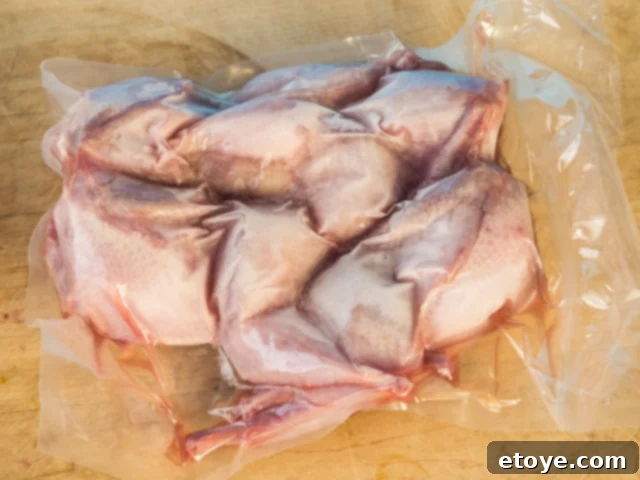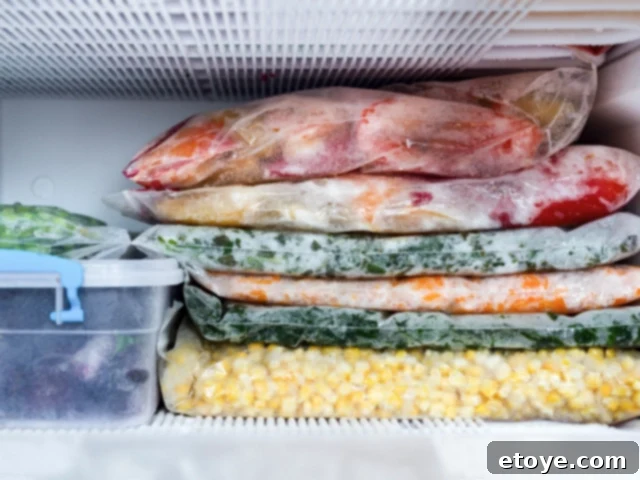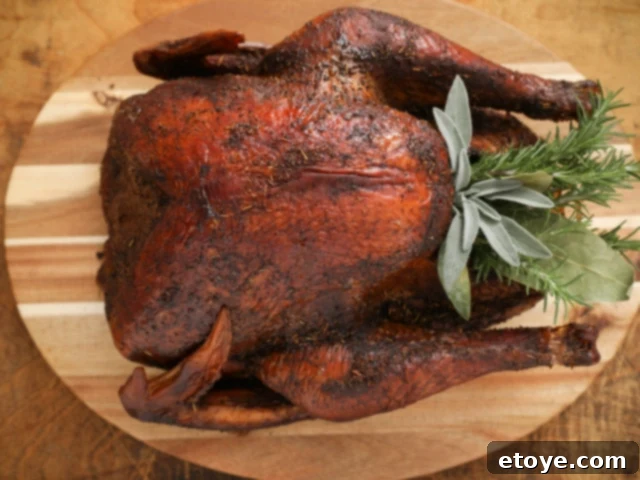The Thanksgiving feast is a highlight of the year, a time for gathering, gratitude, and, of course, an abundance of delicious food. But what happens when the last slice of pie is gone, and you’re left staring at a mountain of perfectly cooked turkey? The thought of wasting that flavorful bird is simply unbearable, and let’s be honest, there’s only so much turkey sandwich one person can eat in a week! Thankfully, there’s an excellent solution to preserve your culinary triumph and extend the joy of the holiday season: freezing your leftover Thanksgiving turkey. This comprehensive guide will walk you through the proper and safe methods to freeze leftover turkey, ensuring it remains as delectable months down the line as it was fresh out of the oven. Say goodbye to food waste and hello to effortless future meals with your frozen turkey stash.
The Essential Guide to Freezing Leftover Turkey
Freezing turkey is a simple yet effective strategy to transform your Thanksgiving leftovers into convenient, ready-to-use meals for weeks, or even months, to come. Mastering this process means you’ll always have a head start on healthy, home-cooked dinners. Follow these best practices to ensure your turkey retains its incredible flavor and texture long after the holiday.
- Act Quickly: Cool It Down First
Food safety is paramount when handling cooked turkey. To prevent harmful bacterial growth, it’s crucial to get your leftover Thanksgiving turkey into the refrigerator or freezer within two hours of cooking. Do not leave it at room temperature for an extended period. To speed up the cooling process, divide large portions into smaller, shallow containers, which allows air to circulate and cools the meat more rapidly. You can even place these containers in an ice bath before transferring them to the fridge to bring the temperature down swiftly. Once thoroughly chilled in the refrigerator, usually within a few hours, your turkey is ready for the freezer. This initial cooling step is vital for maintaining both safety and quality. - Strategic Portioning for Future Convenience
While the idea of freezing an entire turkey might seem appealing, breaking it down into smaller, manageable portions is a far more practical approach. This foresight allows you to defrost only the exact amount you need for a specific meal, preventing unnecessary thawing and refreezing, which can compromise quality. Consider how you’ll use the turkey: whole breast meat pieces for roasting, shredded turkey for sandwiches or tacos, or drumsticks for a quick dinner. You can freeze different cuts like breast meat, leg and thigh portions, or even pre-made turkey sandwiches. This flexibility makes meal planning a breeze and ensures variety in your post-holiday dishes. - Master the Art of Wrapping to Prevent Freezer Burn
Freezer burn is the nemesis of frozen food, transforming delicious turkey into dry, unappetizing fare. It occurs when air comes into contact with the food’s surface, causing dehydration and oxidation. The key to preventing freezer burn is creating an airtight seal around your turkey. Start by wrapping each large piece (or tightly packing smaller shredded bits) in a layer of heavy-duty plastic wrap. Press out as much air as possible to create a snug fit. Follow this with a second layer of protection: either aluminum foil or a freezer-safe zip-top bag. The double-layer approach provides superior insulation against air and moisture loss, preserving your turkey’s flavor, moisture, and texture for optimal enjoyment later. - Utilize High-Quality Freezer-Safe Containers
Beyond wraps and bags, freezer-proof containers offer another excellent option for safeguarding your turkey. Look for containers specifically designed for freezing, made from materials like heavy-duty plastic or tempered glass. These containers are built to withstand extreme temperatures without cracking and are often stackable, making freezer organization more efficient. Always ensure the containers have tight-fitting lids that create an airtight seal. An airtight container is a true game-changer, acting as a robust barrier against air exposure, significantly contributing to the preservation of the turkey’s peak flavor and quality. - The Golden Rule: Label and Date Everything
Even the most meticulous home cooks can find themselves playing a guessing game with unmarked freezer items. To avoid this common predicament, make labeling an absolute priority. Clearly label each package or container with the contents (e.g., “shredded white meat turkey,” “dark meat portions”) and the date it was frozen. Adding the quantity (e.g., “2 cups,” “1 lb”) can also be incredibly helpful for future meal planning. Use a permanent marker that won’t smudge or fade. This simple step ensures you use your frozen turkey within its optimal quality timeframe and helps you rotate your stock effectively, making the most of your delicious leftovers. - Don’t Forget the Bones: Make Turkey Stock!
After carving your turkey, don’t discard the carcass and bones! They are a treasure trove of flavor perfect for making homemade turkey stock. Simply place the bones (and any leftover bits of meat or skin) into a large pot, cover with water, add some aromatics like onions, carrots, and celery, and simmer for several hours. Once cooled, strain the stock and freeze it in portions. Turkey stock is an invaluable ingredient for soups, stews, gravies, and sauces, ensuring no part of your Thanksgiving turkey goes to waste. It’s a wonderful way to extend the holiday flavors into comforting, nourishing meals throughout the year.

How Long Can You Store Turkey in the Freezer?
While freezing is an exceptional method for extending the life of your turkey, it’s important to understand that while frozen turkey remains “safe indefinitely” when stored continuously at 0°F (-18°C) or below, its flavor and texture quality can diminish over time. The key is to consume it within recommended periods for the best culinary experience. The USDA provides clear guidelines to help you enjoy your turkey at its peak quality:
- Fresh Whole Turkey: For the best quality, aim to use a whole, uncooked turkey within 12 months of freezing. Beyond this, it remains safe but may not taste as fresh.
- Fresh Turkey Parts: Individual uncooked turkey pieces, such as breasts, thighs, or wings, maintain their optimal quality for up to 9 months.
- Ground Turkey and Giblets: These items are best used within 3 to 4 months of freezing to preserve their texture and flavor.
- Cooked Turkey (Carved or Shredded): Cooked turkey, whether sliced, diced, or shredded, should be enjoyed within 4 months for the best taste and consistency. This is especially relevant for your Thanksgiving leftovers.
- Cooked Turkey Dishes (like casseroles, pot pies, or stews): Meals prepared with cooked turkey tend to hold their quality well for 4 to 6 months in the freezer, making them perfect for future convenient dinners.
- Turkey Broth and Gravy: Homemade turkey broth and gravy, invaluable for enhancing other dishes, should be consumed within 2 to 3 months for the freshest taste.
- Turkey Lunch Meat: Pre-packaged turkey deli meat should be frozen for no longer than 1 to 2 months to retain its quality.
Adhering to these guidelines ensures that your frozen turkey not only stays safe but also delivers the deliciousness you expect, making your efforts in proper freezing truly worthwhile.

Maximizing Leftovers: Freezing Side Dishes, Too!
The culinary bounty of Thanksgiving often extends beyond just the turkey. Many of your cherished side dishes can also be successfully frozen, allowing you to enjoy a taste of the holiday long after the main event. Freezing sides alongside your turkey is an intelligent way to maximize your efforts and minimize food waste. Here’s how to preserve those delicious accompaniments:
- Gravy: A Rich Addition to Future Meals
Thanksgiving gravy is liquid gold, and it freezes beautifully. To make portioning easy and convenient, freeze leftover gravy in ice cube trays. Once solid, transfer the gravy cubes to a freezer-safe bag or container. This method allows you to thaw just the right amount for a single serving or to enrich a sauce or soup. When reheating, whisk gently over low heat to restore its smooth consistency, adding a splash of broth or water if it’s too thick. - Cranberry Sauce: Sweet and Tangy for Any Occasion
Both homemade and canned cranberry sauce freeze exceptionally well. Scoop the sauce into individual portions in small freezer-safe containers or freezer bags. When thawed, it’s perfect as a side dish, a spread for sandwiches, or even as an ingredient in baking. Its vibrant flavor and color will bring a festive touch to any meal. - Vegetables: Preserving Green Goodness
Most cooked vegetables, such as green beans, corn, and roasted root vegetables, can be frozen. However, be aware that their texture might become slightly softer upon reheating due to the water content within their cells expanding during freezing. To minimize this, ensure they are cooled completely before freezing, and consider freezing them in single layers on a baking sheet before transferring to a bag or container to prevent clumping. For dishes like green bean casserole, you might freeze the components separately or be prepared for a slightly different texture in the reheated casserole. - Mashed Potatoes: Comfort in a Portion
Creamy mashed potatoes can also be frozen, though they sometimes benefit from a dollop of cream or butter when reheated to restore their original texture. Freeze them in individual serving sizes in freezer-safe containers or spread them in a shallow layer to cool quickly. - Stuffing/Dressing: A Challenge Worth Taking
Stuffing can be frozen, but its texture might change slightly, becoming a bit softer. For best results, freeze it in an airtight container or individual portions. When reheating, you might want to crisp it up in the oven. It’s best to freeze stuffing that doesn’t contain too much moisture from ingredients like celery or onions, which can become overly soft.
By extending your freezing efforts to side dishes, you’re not just saving food; you’re creating a versatile pantry of ready-to-use ingredients and complete meal components, making future cooking simpler and more enjoyable.

How to Safely Thaw Frozen Turkey: Methods and Best Practices
Once you’ve meticulously frozen your turkey, the next critical step is thawing it safely. Proper thawing is essential not only for maintaining the quality and taste of your turkey but, more importantly, for preventing the growth of harmful bacteria. The USDA strongly advises against thawing turkey on the kitchen counter, as this allows the outer layers to warm into the “danger zone” (40°F to 140°F or 4°C to 60°C) where bacteria multiply rapidly, while the interior remains frozen. Always use one of the three safe thawing methods recommended by food safety experts:
1. Refrigerator Thawing: The Safest and Best Method for Quality
Thawing turkey in the refrigerator is the most recommended method for both food safety and preserving the texture and flavor of the meat. It’s a slow, gentle process that keeps the turkey at a consistently safe temperature (below 40°F/4°C). This method requires planning ahead, as it takes considerable time, especially for larger pieces or a whole turkey.
- Planning is Key: Allow approximately 1 day of thawing time for every 4-5 pounds (1.8-2.3 kg) of turkey. For instance, a 20-pound turkey would need about 4-5 days to thaw completely.
- Optimal Placement: Place the frozen turkey (still in its original packaging or a leak-proof bag) on a plate or in a shallow pan on the lowest shelf of your refrigerator. This prevents any potential drips from contaminating other foods.
- Ideal for All Sizes: This method is perfect for thawing whole turkeys, large cuts, and smaller portions alike, ensuring even thawing and minimal risk of bacterial growth.
- Post-Thaw Storage: Once thawed in the refrigerator, raw turkey can be safely stored in the fridge for an additional 1-2 days before cooking. Cooked turkey can be stored for 3-4 days after thawing before reheating.
2. Cold Water Thawing: A Faster Option for Smaller Portions
If you’re pressed for time, the cold water method offers a faster alternative, particularly suitable for turkey parts or smaller packages. This method requires more attention to detail to ensure safety.
- Ensure Airtight Packaging: It’s crucial that the turkey is in a completely leak-proof bag or airtight container. Any water seeping in can affect the texture and potentially introduce bacteria.
- Constant Cold Water: Submerge the wrapped turkey completely in a sink or large pot filled with cold tap water.
- Regular Water Changes: Change the water every 30 minutes to ensure it remains cold and to facilitate even thawing.
- Thawing Rate: Allow about 30 minutes per pound (0.45 kg) of turkey. For example, a 1-pound package of turkey might take about 30 minutes, while a 4-pound package would take roughly 2 hours.
- Immediate Cooking: Turkey thawed using the cold water method must be cooked immediately after it’s fully defrosted to maintain food safety. Do not refreeze raw turkey thawed this way without cooking it first.
3. Microwave Thawing: The Quickest but Most Limited Method
Microwave thawing is the fastest method and is best reserved for small portions of turkey that will be cooked immediately. Microwaves can heat unevenly, potentially starting to cook parts of the turkey while other sections remain frozen, creating warm spots where bacteria can thrive if not cooked right away.
- Consult Your Manual: Refer to your microwave’s owner’s manual for specific defrosting settings and recommended thawing times based on the weight of the turkey.
- Rotate and Separate: To ensure more even thawing, rotate the turkey during the defrost cycle and separate pieces as they become pliable.
- Cook Immediately: Always cook turkey immediately after thawing it in the microwave. Never store partially or fully defrosted turkey back in the refrigerator; it must go straight to the cooking process. This prevents any bacteria that might have started growing from multiplying further.
Safe Reheating Practices
Once thawed, cooked turkey should be reheated to an internal temperature of 165°F (74°C) to ensure any potential bacteria are destroyed. Use a food thermometer to verify. Reheat sauces and gravies to a rolling boil.
By carefully following these thawing guidelines, you can confidently enjoy your frozen Thanksgiving turkey and other leftovers, knowing they are both safe and delicious.

Inspiring Ideas for Using Your Frozen Leftover Turkey
Freezing your Thanksgiving turkey isn’t just about preventing waste; it’s about opening up a world of culinary possibilities for future meals. Once safely thawed, your frozen turkey can be transformed into an array of delicious and comforting dishes. Here are some creative and classic ideas to make the most of your stored holiday bird:
- Hearty Shepherd’s Pies or Turkey Pot Pies: Reimagined with turkey, these classic comfort foods are perfect for chilly evenings. Layer shredded or diced turkey with a mix of leftover vegetables (like peas, carrots, and corn) in a savory gravy. Top with fluffy mashed potatoes for a shepherd’s pie, or a flaky pastry crust for a pot pie. These can be assembled ahead of time and frozen for an even quicker meal.
- Nourishing Soups and Robust Stews: Turkey is a fantastic base for deeply flavorful soups and stews. Use any turkey bones saved from the initial feast to create a rich, homemade turkey stock. Then, add your thawed turkey meat, along with various vegetables (celery, carrots, potatoes, kale), herbs, and spices. A classic turkey noodle soup, a creamy turkey and wild rice soup, or a spicy turkey chili are all excellent choices for using up those frozen portions.
- Elevated Next-Day Sandwiches and Wraps: Beyond the traditional post-Thanksgiving sandwich, elevate your game. Think gourmet turkey and cranberry sauce panini, a warm turkey and stuffing melt, or a fresh turkey club wrap with avocado and bacon. A generous spread of leftover gravy or a dab of seasoned mayonnaise can take these simple meals from good to extraordinary.
- Creative New Meals and Global Flavors: Don’t limit your imagination! Thawed turkey is incredibly versatile and can adapt to many cuisines.
- Turkey Tacos or Enchiladas: Shredded turkey mixed with taco seasoning makes for a quick and easy weeknight meal. Fill warm tortillas with turkey, cheese, and your favorite toppings.
- Turkey Quesadillas or Burritos: Combine turkey with black beans, corn, and cheese for a satisfying quesadilla or burrito filling.
- Turkey Stir-Fries or Curries: Dice your turkey and toss it into a colorful vegetable stir-fry with a savory sauce, or simmer it in a rich coconut curry for a taste of the exotic.
- Turkey Salads: For a lighter option, mix diced turkey with celery, grapes, walnuts, and a creamy dressing for a delightful turkey salad sandwich or as a topping for fresh greens.
- Turkey Croquettes or Fritters: Mix finely chopped turkey with mashed potatoes or breadcrumbs, herbs, and an egg, then pan-fry until golden for a crispy, savory treat.
With a well-stocked freezer of perfectly preserved turkey, you’re not just saving food; you’re investing in future delicious, convenient, and cost-effective meals. The possibilities are truly endless!
How Will You Transform Your Leftover Turkey?
Freezing your Thanksgiving turkey leftovers is a brilliant strategy, allowing you to savor that special holiday flavor and ease your meal preparation for weeks or even months after the celebration. It’s a wonderful way to extend the joy of the feast while making a significant dent in food waste, a win-win for both your palate and the planet.
We’re always eager to discover new culinary inspirations! What are some of your favorite, most creative, or simplest ways to utilize turkey leftovers from your freezer stash? Share your go-to recipes, ingenious hacks, or comforting meal ideas with us in the comments below. Your tips could inspire countless others to make the most of their post-holiday bounty!
Looking for More Tips on Thanksgiving Leftovers?
Dive deeper into the world of creative leftover solutions with these fantastic resources:
- No Waste November: A 7-Day Meal Plan for Thanksgiving Leftovers
- Meal Ideas For Turkey Day Leftovers
- What To Do With Thanksgiving Leftovers: Turn THIS into THAT
- Leftover Turkey: “The Bobbie” Thanksgiving Sandwich

